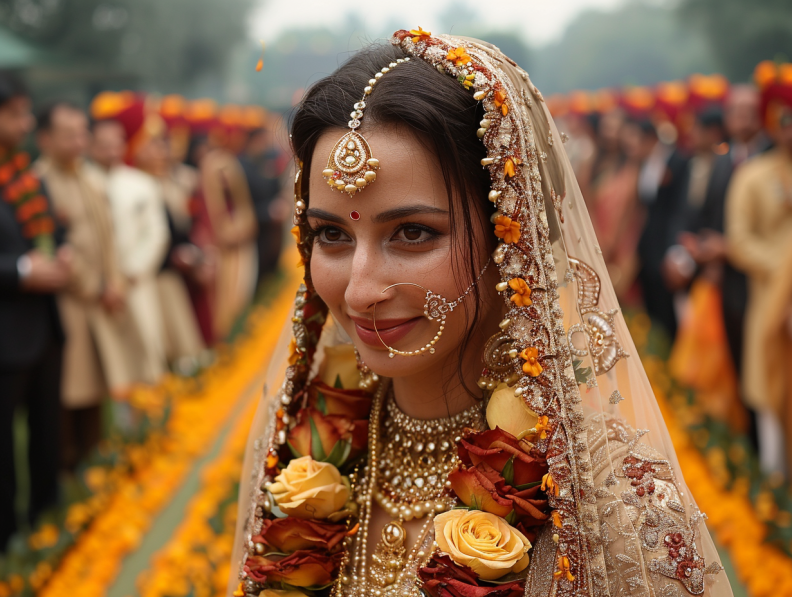Physical Address
304 North Cardinal St.
Dorchester Center, MA 02124
Physical Address
304 North Cardinal St.
Dorchester Center, MA 02124

South Indian weddings are much more than just a celebration of love between two individuals. They embody centuries of cultural traditions, spiritual significance, and community involvement. Each element of the wedding, from the rituals performed to the attire worn, reflects the deep-rooted values and beliefs of the families involved.
The weddings in South India often span several days, as each event is meticulously planned to ensure that every spiritual and familial obligation is honored. Unlike Western-style weddings that might take place over a single day, South Indian weddings are structured around a series of ceremonies that prepare the couple not only for their life together but also for their role in the larger community. These multi-day celebrations allow families to come together, strengthen bonds, and honor their shared heritage.
South Indian weddings are traditionally celebrated over multiple days because of the rich cultural and religious significance attached to each ritual. The idea behind these extended celebrations is to give time and space for a variety of customs that are integral to the marriage, ensuring that every important aspect of the couple’s journey is recognized and honored.
One of the key reasons for the multi-day format is the emphasis on religious rituals. In Hinduism, marriage is seen as a sacred union, and there are several ceremonies that must take place to invoke blessings from the gods, purify the couple, and ensure their future happiness and prosperity. These rituals, spread over multiple days, involve not only the bride and groom but also their extended families and the community, emphasizing the collective importance of the union.
In addition to the spiritual elements, practical considerations also play a role in the duration of these weddings. South Indian weddings are elaborate affairs, often involving hundreds of guests, extensive planning, and preparation. From the decoration of the venue to the elaborate meals served to guests, the logistics of such an event require more than just a single day.
South Indian weddings are structured around a series of rituals and events, each with its own significance. These ceremonies are designed to purify the couple, bring the families together, and celebrate the beginning of a new chapter in the couple’s life. Here’s a breakdown of the key events over the course of a typical three-day South Indian wedding.
The first day typically focuses on pre-wedding rituals, which are meant to cleanse and prepare the couple for their spiritual union.
The second day is often the most significant, as this is when the actual marriage ceremony takes place, usually in a temple or a specially decorated venue.
The final day of the wedding is reserved for post-wedding rituals and festivities, focusing on celebrating the union with family and friends.
While South Indian weddings are known for their multi-day celebrations, the length and format of weddings can vary significantly across different regions of India. Understanding these differences sheds light on the diversity of wedding traditions throughout the country.
In Northern India, weddings tend to be just as elaborate but may sometimes take fewer days. Similar to South Indian weddings, they often begin with pre-wedding rituals such as the Mehendi and Haldi ceremonies. However, the main wedding event, including the Baraat (the groom’s procession), and the religious ceremony, often happens on a single day, followed by a reception either on the same day or the following day.
Northern Indian weddings are often characterized by the groom’s arrival on horseback, accompanied by a lively procession of friends and family. The ceremony itself includes important rituals such as the Jaimala (exchange of garlands) and Phere, where the couple circles around a sacred fire. These ceremonies are similar in spirit to the Saptapadi in South Indian weddings but condensed into a shorter timeline.
In Western India, particularly in states like Gujarat and Maharashtra, weddings often span two to three days, featuring vibrant and colorful pre-wedding events like the Garba or Dandiya Raas, where traditional dancing takes place. These regions, much like in South India, emphasize family involvement in every aspect of the celebration.
In Eastern India, such as in Bengali weddings, the celebrations may also extend over multiple days, but the rituals differ. For example, one notable feature is the Saat Paak, where the bride is carried around the groom in seven circles to symbolize their union. However, compared to South Indian weddings, these events are often more condensed and focused on the wedding day itself.
One of the reasons South Indian weddings are often longer than their Northern or Western counterparts is the significant emphasis on religious rituals. Each event, from the Kashi Yatra to the Saptapadi, is deeply rooted in tradition and requires adequate time to be performed with devotion and attention to detail. The multi-day structure ensures that no important step is rushed and that the couple receives ample blessings from family and deities alike.
Moreover, the large-scale involvement of both families, who are considered essential to the success of the marriage, adds another layer of complexity, making it necessary for the celebrations to span several days. In contrast, some Northern and Western weddings, while grand and festive, may condense these rituals into fewer days due to time or logistical constraints.
South Indian weddings span several days to accommodate a variety of religious rituals and cultural traditions. These ceremonies are meant to purify the couple, invoke blessings, and honor the union in a deeply spiritual way. The multi-day format allows time for each ritual to be performed thoughtfully and without rush, ensuring the couple and their families fully participate in this important life event.